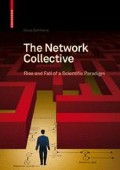Abstract
Artists of the Italian Renaissance developed their characteristic styles from the observation of nature and the formulation of a pictorial science. In 1520, when Raphael died, all the representational problems had been solved, painting had been established as a craft to be learned. The artists who followed, however, instead of taking nature as their teacher, took art itself. This epoch is referred to as “mannerism”, because it had turned style into manner. Today it is realized that most styles of art are followed by a period of mannerism, in this context often referred to as “post-modernism”. Umberto Eco, esteemed author of works of science as well as of fiction, wrote: “I have come to believe that “postmodern” is not a movement confined to a particular time, but a state of mind or, more precisely, an approach to intentional art. One could even say that every epoch has its own post-modernism, just as it was said that every epoch has its own mannerism”.
Quoted from Eco U (1984) Postscript to The Name of the Rose. Hanser, Munich/Vienna, translated by the author.
Access this chapter
Tax calculation will be finalised at checkout
Purchases are for personal use only
Preview
Unable to display preview. Download preview PDF.
Chapter 12 References
Jerne NK (1985) The generative grammar of the immune system. EMBO J 4: 847–852
Chomsky N (1965) Aspects of the Theory of Syntax. MIT Press, Cambridge, Mass
Jerne NK (1984) Idiotypic networks and other preconceived ideas. Immunol Rev 79: 5–24
Schöffer N (1981) La Théorie des Miroirs. Ed. Belfond, Paris
Coutinho A (1980) The self-nonself discrimination and the nature and acquisition of the antibody repertoire. Ann Immunol (Paris) 131D: 235–253
Coutinho A, Forni L, Holmberg D, Ivars F, Vaz N (1984) From an antigen-centered, clonal perspective of immune responses to an organism-centered, network perspective of autonomous activity in a self-referential immune system. Immunol Rev 79: 151–168
Bretscher P, Cohn M (1970) A theory of self-nonself discrimination. Science 169: 1042
Langman RE, Cohn M (1984) The ‘complete’ idiotypic network is an absurd immune system. Immunol Today 7: 100
Ehrlich P (1901) Die Schutzstoffe des Blutes. 73. Vers. Deutsch. Naturforsch. u. Ärzte. Dtsch Med Wochenschr 50/52
Ramos GR, Vaz NM, Saalfeld K (2006) Wings for flying, lymphocytes for defense, exaptation and specific immunity. Complexus 3: 211
Gould SJ, Lewontin RC (1979) The spandrels of San Marco and the Panglossian paradigm: a critique of the adaptationist programme. Proc R Soc Lond B Biol Sci 205: 581–598
Vaz NM, Varela FJ (1978) Self and non-sense: an organism-centered approach to immunology. Med Hypotheses 4: 231–267
Varela FJ (1995) The Emergent Self. In: Brockman J (ed): The third culture: Beyond the scientific revolution. Simon & Schuster, New York
Maturana H, Varela F (1980) Autopoiesis and Cognition: The Realization of the Living. D. Reidel, Boston
Calenbuhr V, Bersini H, Stewart J, Varela FJ (1995) Natural tolerance in a simple immune network. J Theor Biol 177: 199–213 Stewart J, Varela FJ (1991) Morphogenesis in shape-space. Elementary meta-dynamics in a model of the immune network. J Theor Biol 153: 477–498 Varela FJ, Coutinho A (1991) Second generation immune networks. Immunol Today 12: 159–166 Varela FJ, Coutinho A (1989) Immune networks: getting on to the real thing. Res Immunol 140: 837–845
Eco U (1976) A Theory of Semiotics. Bloomington: Indiana University Press Eco U (1984) Semiotics and the Philosophy of Language. McMillan Press, Houndsmill
Peirce CS, Hartshorne C, Weiss P (1960) Collected Papers of CS Peirce. Belknap Press Sassure DF (1967) Cours de Linguistique general. Harrassourtz, Wiesbaden; Sebeok TA (2001) Global Semiotics. Indiana University Press
Von Uexküll T (1999) The relationship between semiotics and mechanical models of explanation in the life sciences. Biosemiotica 127: 647–655
Celada F, Mitchison A, Sercarz EE, Tada T (eds) (1988) The Semiotics of Cellular Communication in the Immune System. Springer-Verlag, Berlin and Heidelberg See articles by Eco U, Von Uexküll T, Violi P, Golub ES, Bona CA, Ohno S, Varela FJ, Jaquemart F and Coutinho A, Vaz NM, Hoffmann GW, Sercarz EE
Further reading
Hauser A (1984) Der Manierismus. Die Krise der Renaissance und der Ursprung der modernen Kunst. C.H. Beck, München
Maturana HR, Varela FJ (1987) The tree of knowledge: The biological roots of human understanding. Shambhala, Boston
Rights and permissions
Copyright information
© 2008 Birkhäuser Verlag AG
About this chapter
Cite this chapter
(2008). Network mannerism. In: The Network Collective. Birkhäuser Basel. https://doi.org/10.1007/978-3-7643-8373-2_12
Download citation
DOI: https://doi.org/10.1007/978-3-7643-8373-2_12
Publisher Name: Birkhäuser Basel
Print ISBN: 978-3-7643-8372-5
Online ISBN: 978-3-7643-8373-2
eBook Packages: Biomedical and Life SciencesBiomedical and Life Sciences (R0)

